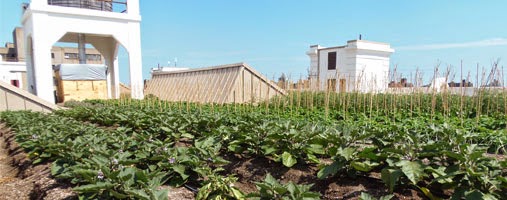Hi Air - Mercury Emissions Spread Overland!.
Hi Air / Water; A national study finds that mercury has spread, even to areas considered to be pristine.

Fig A Above;
Although generally low in concentration, a study of mercury levels in fish from 21 Western national parks did find some locations where mercury concentrations exceeded health thresholds for potential impacts to fish, birds and humans, according to a recent publication by U.S. Geological Survey (USGS) and National Park Service (NPS) researchers. This study, the first of its kind, detected mercury in all of the fish sampled, even from the more pristine areas of the parks.
What is Mercury?
Mercury is a toxic, global contaminant that threatens ecosystem and human health. It is a naturally occurring element and the only metal that exists as a liquid at room temperature. Mercury is also used in industrial practices, mostly for the manufacture of industrial chemicals and for electrical and electronic applications.
The EPA sets standards for safe consumption of fish for human health in regard to mercury levels. In addition, EPA and the U.S. Food and Drug Administration have issued a joint advisory regarding recommended consumption of fish and shellfish due to mercury contamination levels. More than 16 million lake acres and one million river miles are under fish consumption advisories due to mercury in the United States, and 81 percent of all fish consumption advisories issued by EPA are because of mercury contamination.
Where Were These Fish Found?
More than 1,400 fish were collected between 2008 and 2012 from hard-to-reach, high-elevation lakes and streams in 21 national parks in the Western United States and Alaska. Investigators sampled 16 species, with a focus on sport fish such as brook trout, rainbow, cutthroat and lake trout, as well as smaller prey fish eaten by birds and other wildlife.
How Did Mercury Migrate?
Although there are natural sources of mercury, such as emissions from volcanoes, the majority of the mercury in these high elevation areas arrives from man-made sources such as coal-burning power plants, waste incinerators, oil and gas wells, and mining operations. The mercury can originate many miles from the national parks, as it travels through the atmosphere as tiny particles or gases. It then settles to the ground carried by falling rain or snow, or landing on the ground as dust particles. In wetlands, atmospheric mercury can be transformed into methylmercury, a more dangerous form to living organisms.
Methylmercury levels can accumulate in animals over time and actually increase in concentration up the food chain, resulting in very high levels in larger animals. This process is known as bioaccumulation and happens when predators eat prey animals that already have mercury in them. The mercury in the prey animals is then stored in the tissues of the predator.
Dangerous to Human and Animal Health!!!
During their research, the scientists found that the mercury levels in fish greatly varied between parks and between sites within each park. In most parks, mercury concentrations in fish were moderate to low in comparison with similar fish species from other locations in the Western United States. Mercury concentrations were below EPA’s fish tissue criterion for safe human consumption in 96 percent of the sport fish sampled.
There were, however, particular areas that researchers identified elevated fish mercury concentrations, including levels that exceed safe human consumption or wildlife health benchmarks. Some sport fish exceeded the EPA human health criterion at Lake Clark, Lassen Volcanic, Mount Rainier, Rocky Mountain, Wrangell-St. Elias, Yellowstone and Yosemite national parks.
Mercury concentrations in individual fish also exceeded the most conservative fish toxicity benchmark at Capitol Reef, Lake Clark, Lassen Volcanic, Mount Rainier, Rocky Mountain, Wrangell-St. Elias, Yosemite and Zion national parks. Mercury levels in some fish exceeded the most sensitive health threshold for fish-eating birds at all parks except Crater Lake, Denali, Grand Teton, Great Basin, Great Sand Dunes, Mesa Verde and Sequoia-Kings Canyon national parks.
Start with Science!!!
Although risk of harm to humans and wildlife may be low in many locations, there are substantial concerns about the locations with high risk.
This study identified areas where additional research is needed to better understand the risk to all national park units, and other remote landscapes or understudied environments.
Ultimately, advisories and related warnings consider both the risks and benefits of consuming fish.
Future collaborations between research groups would map patterns of mercury across national parks in greater detail, supporting resource managers’ decisions to protect both national park visitors and the wildlife they come to see.
The USGS’s website at provides many fascinating stories and information, click the link here to visit the site.
- "Their tag line is “science for a changing world.”

Fig B. Above; Spatial distribution of the 21 national parks sampled in this study. Size of circle represents percentage of total dataset.

Fig C. Above; A NPS researcher holds a brook trout in Mount Rainier National Park. Image credit: Collin Eagles-smith, USGS.




.gif)
.jpg)
.jpg)
.jpg)
.jpg)
.jpg)
.jpg)
.jpg)
.jpg)
.jpg)
.jpg)



.jpg)

.jpg)
.jpg)
.jpg)
.jpg)
.jpg)
.jpg)

.jpg)
.jpg)
.jpg)
.jpg)
.jpg)
.jpg)
.jpg)
.jpg)
.jpg)
.jpg)


